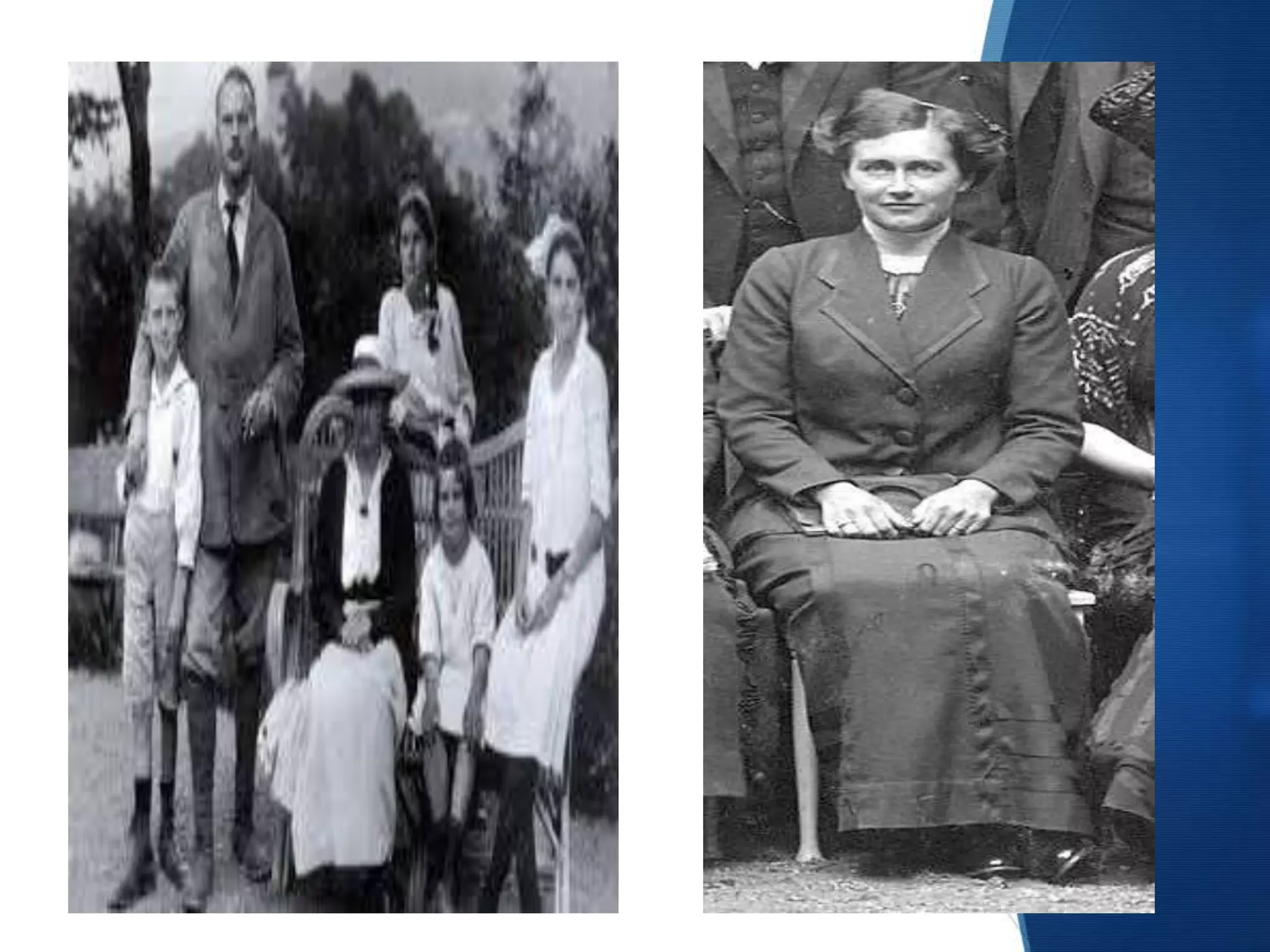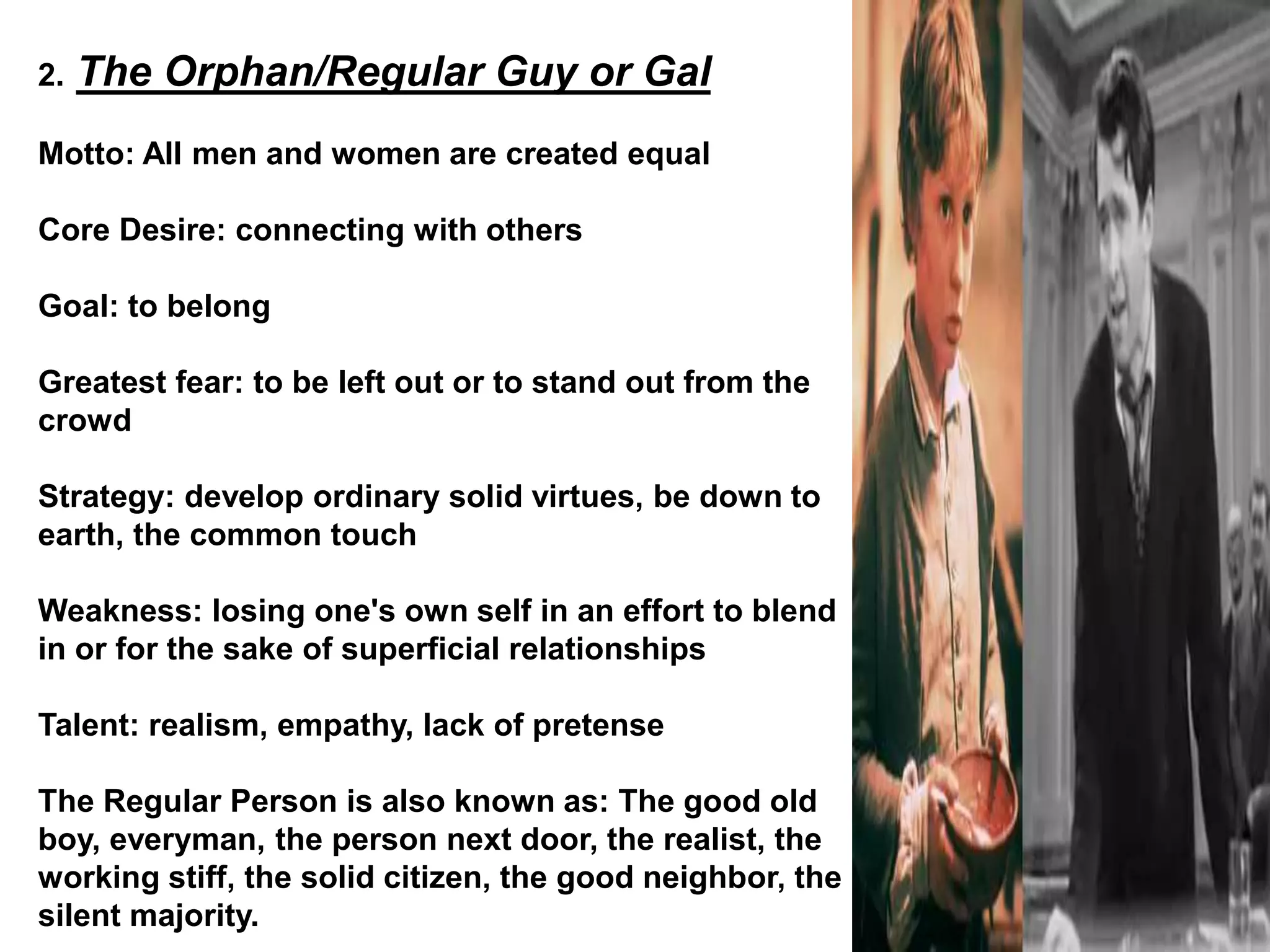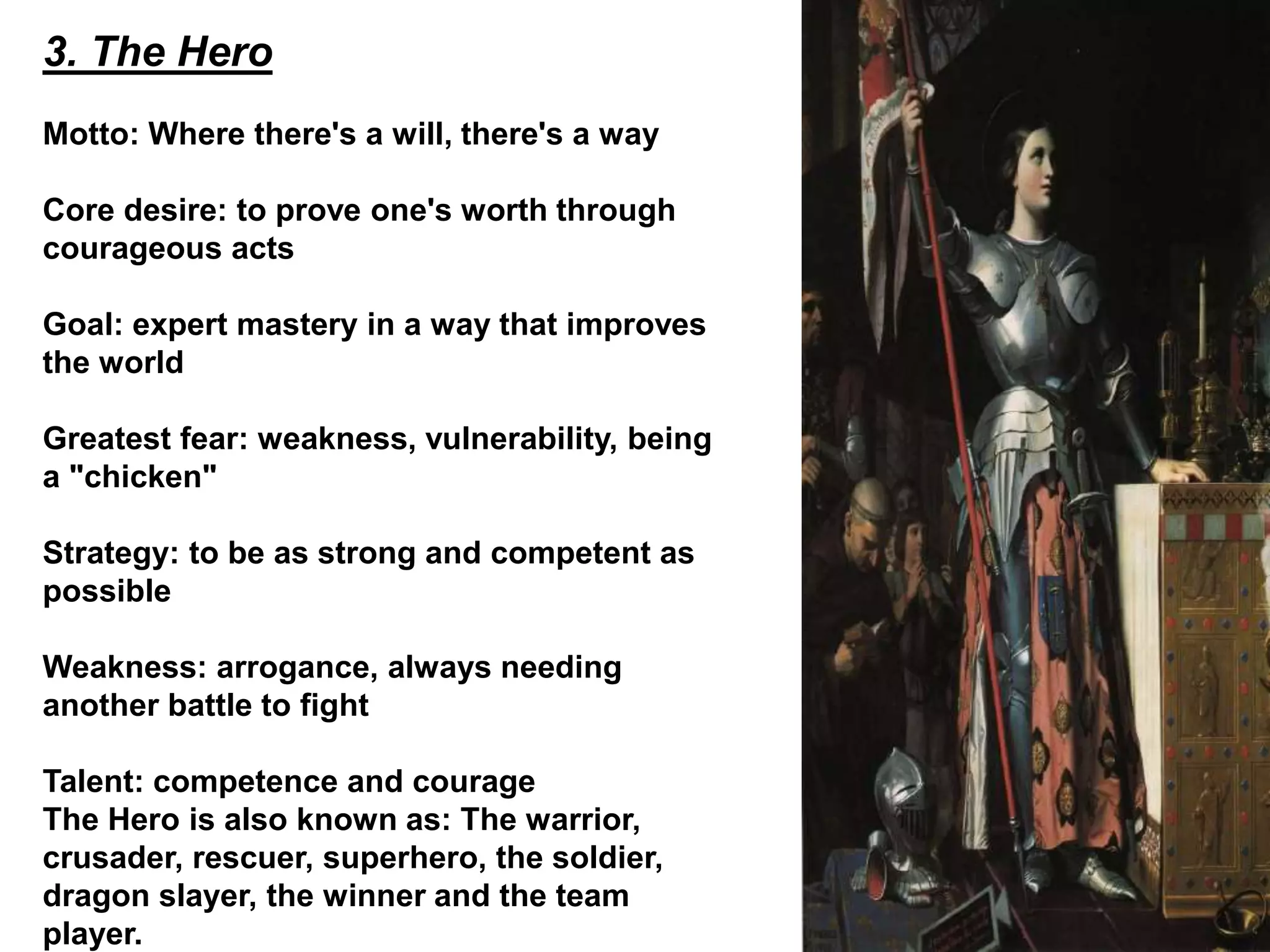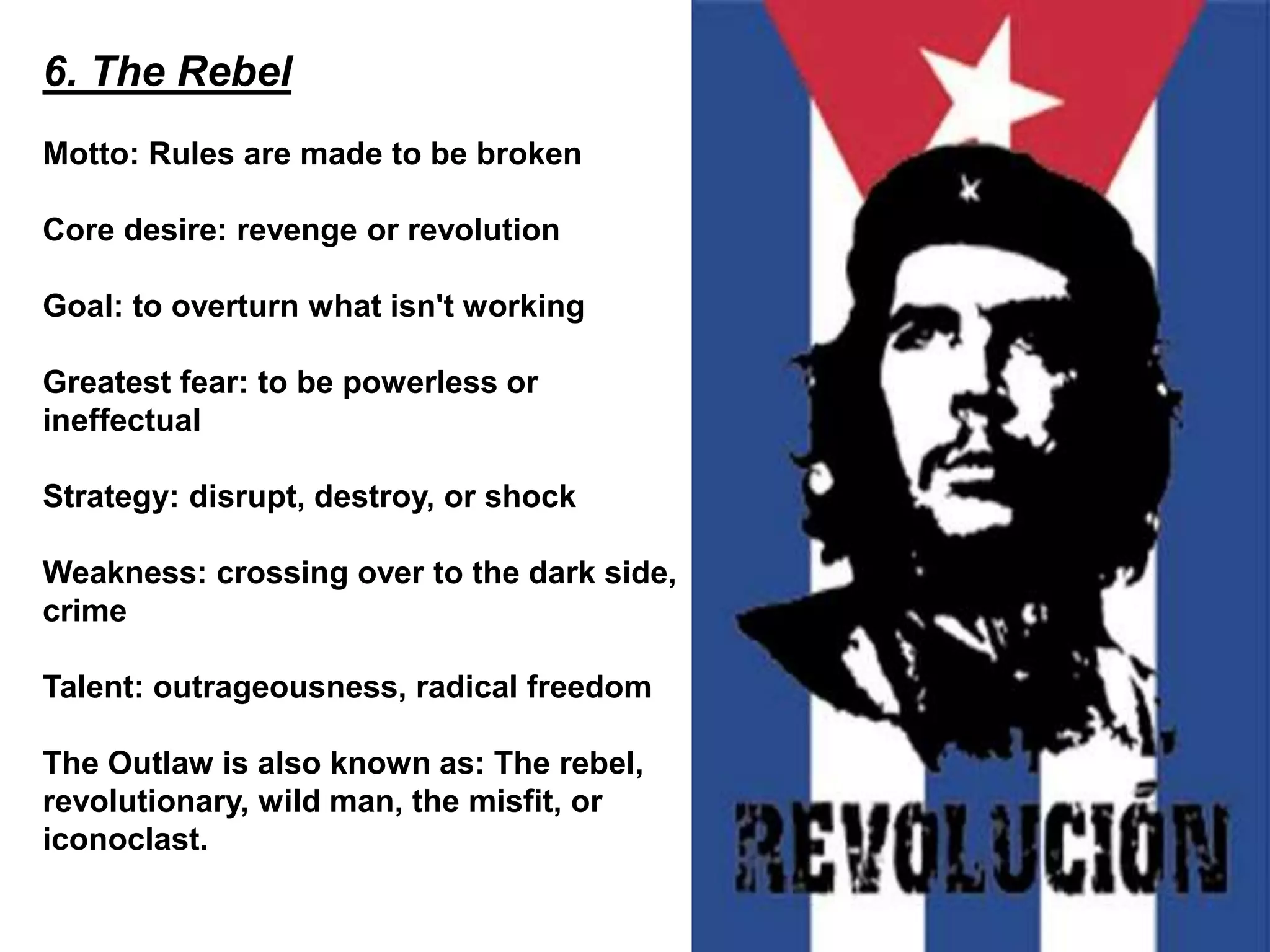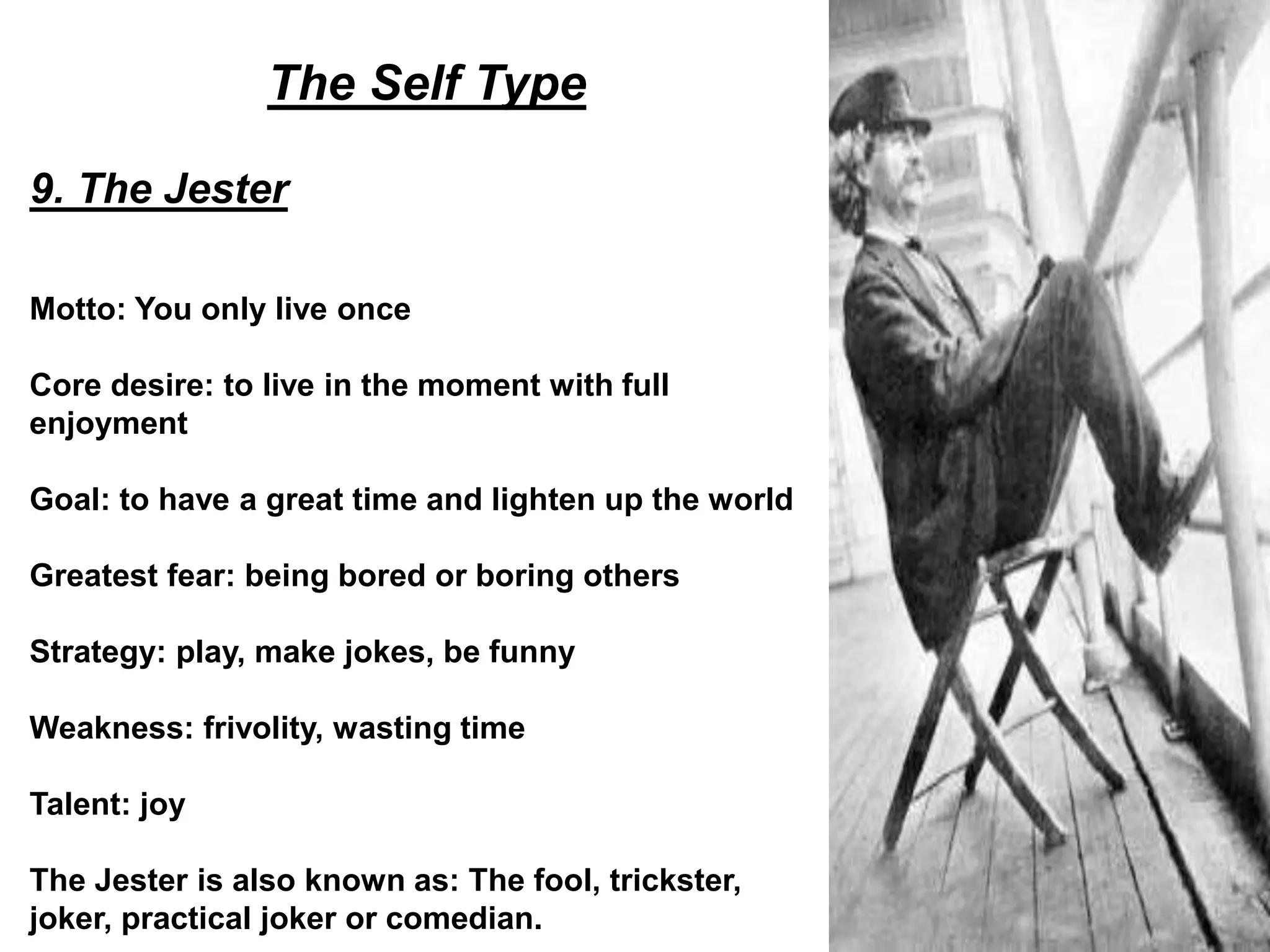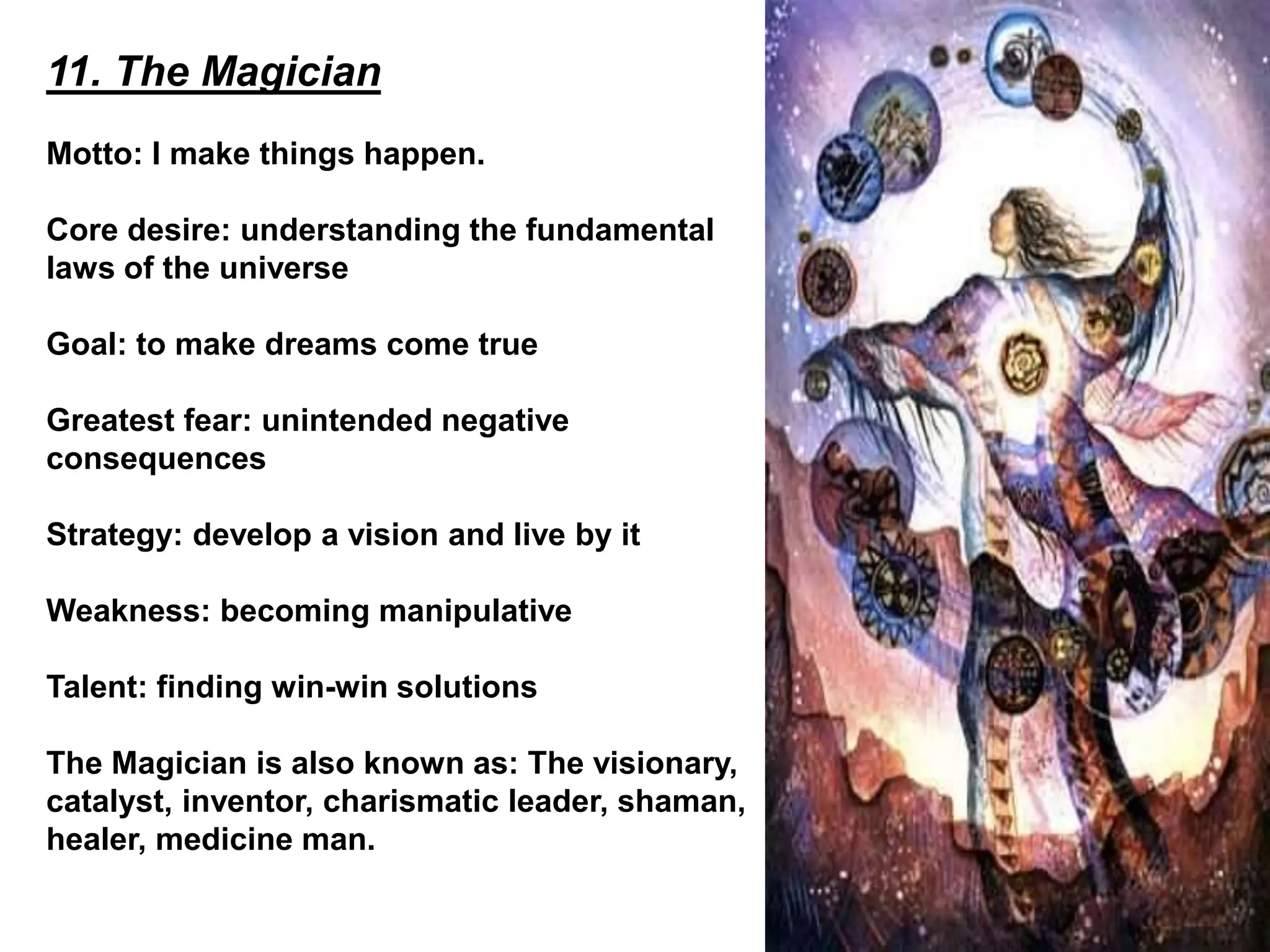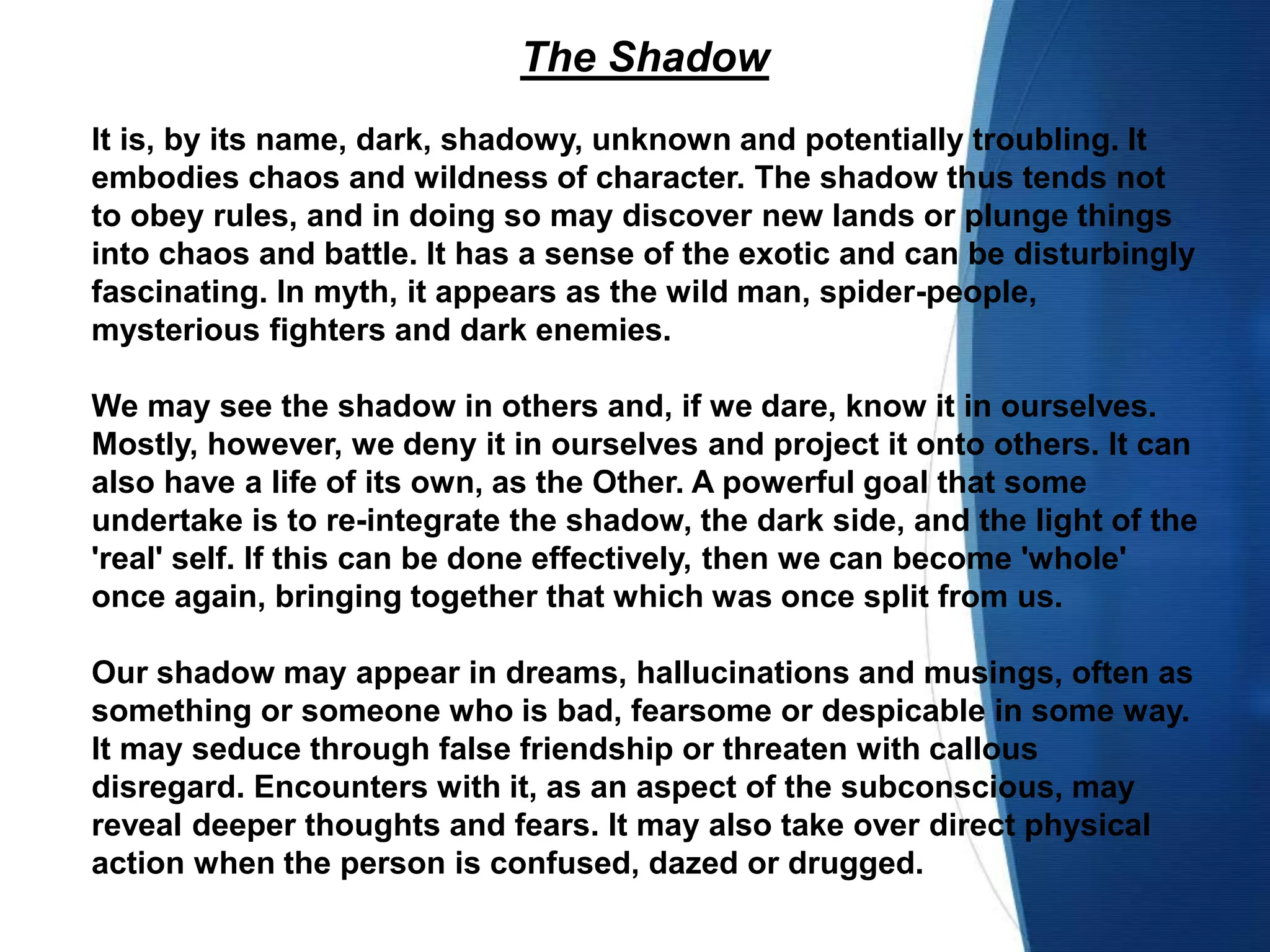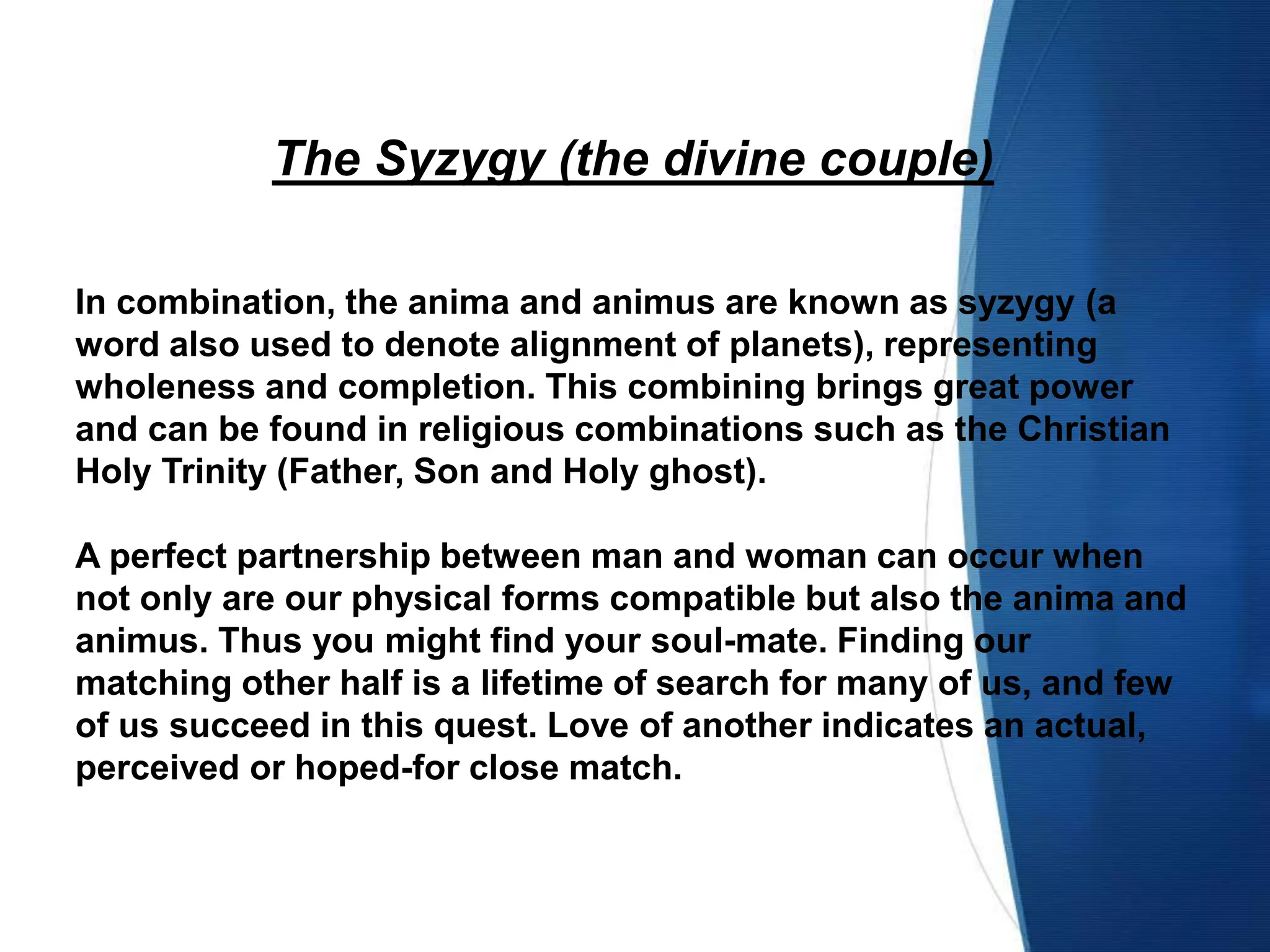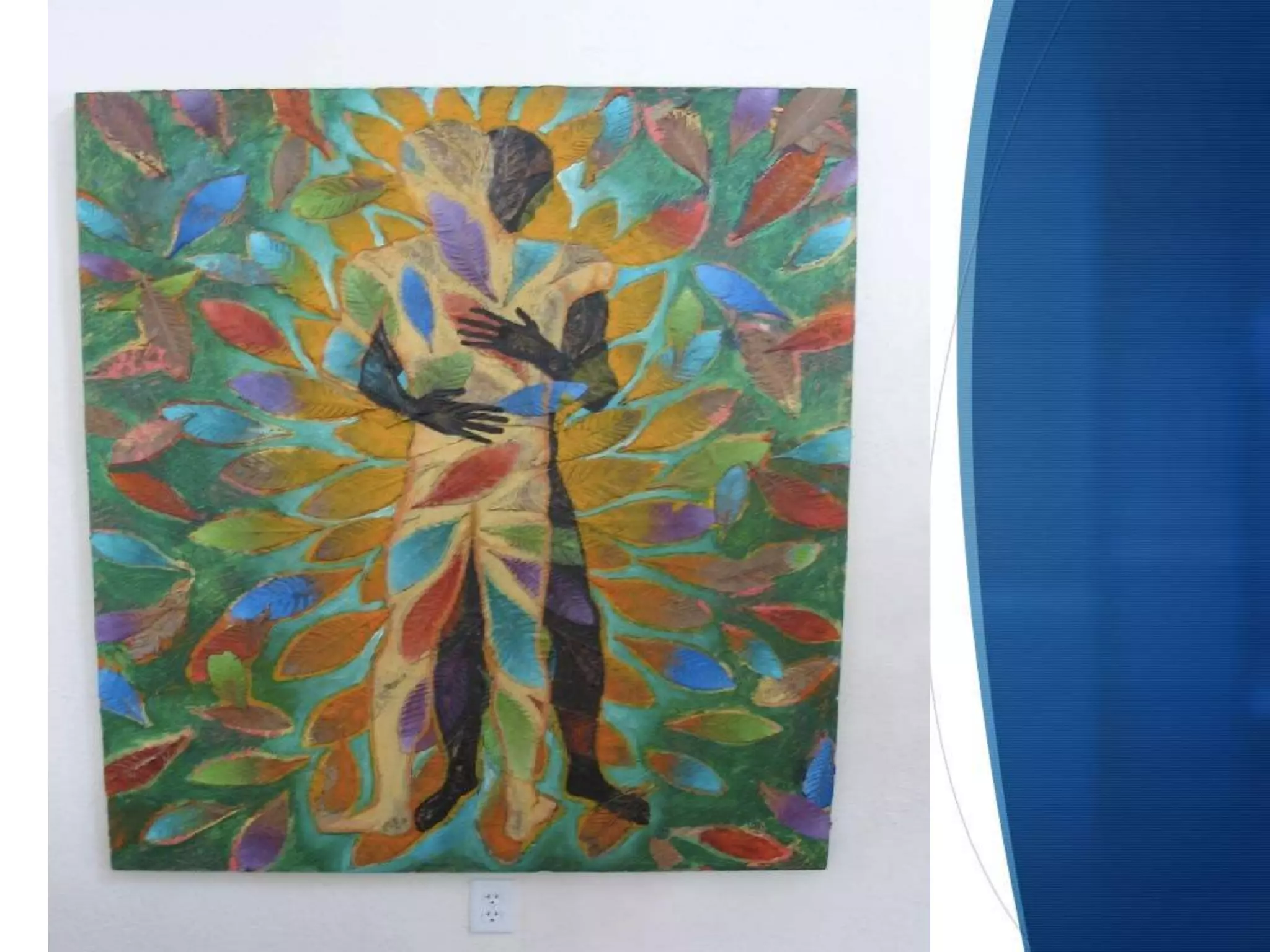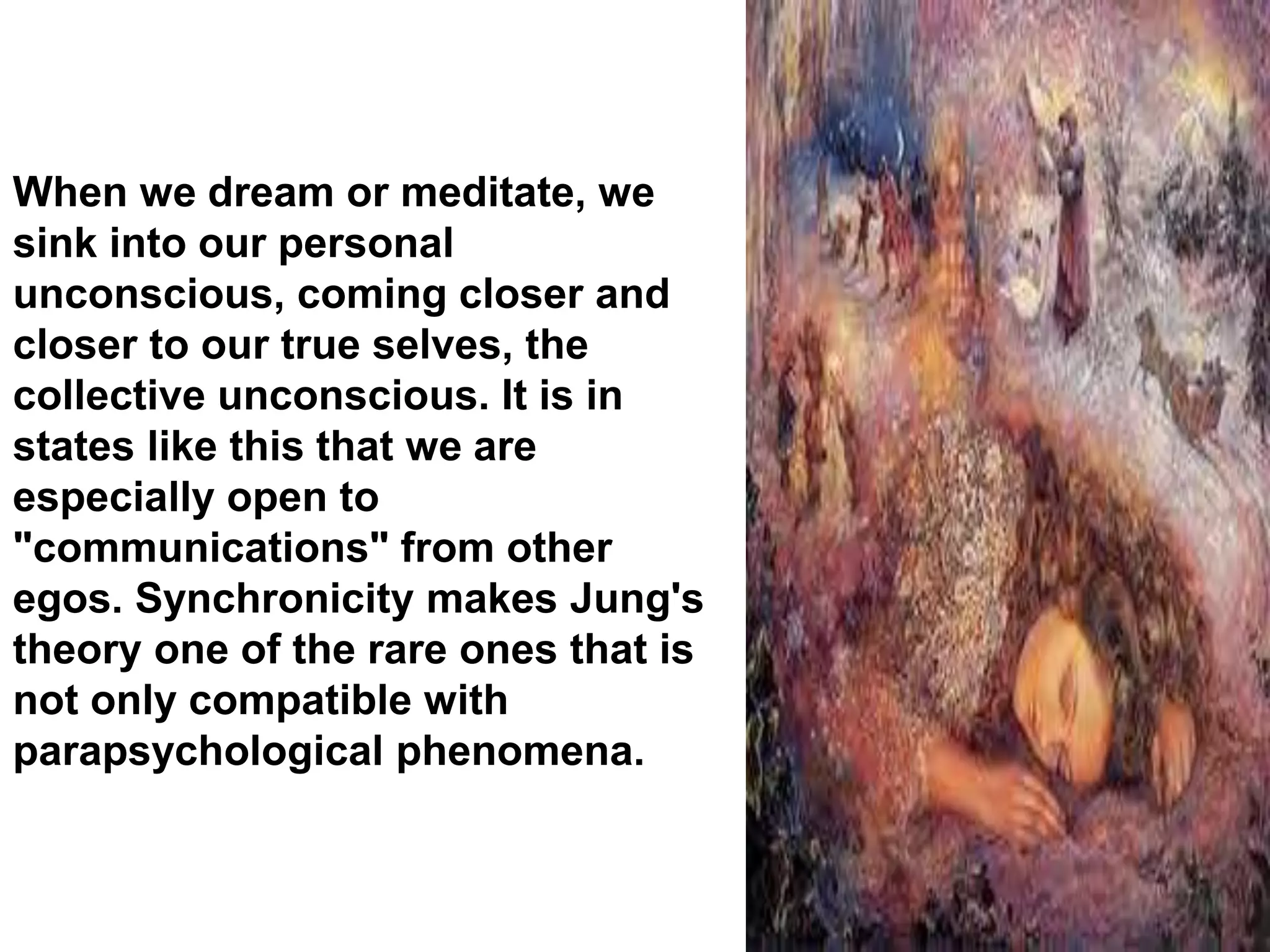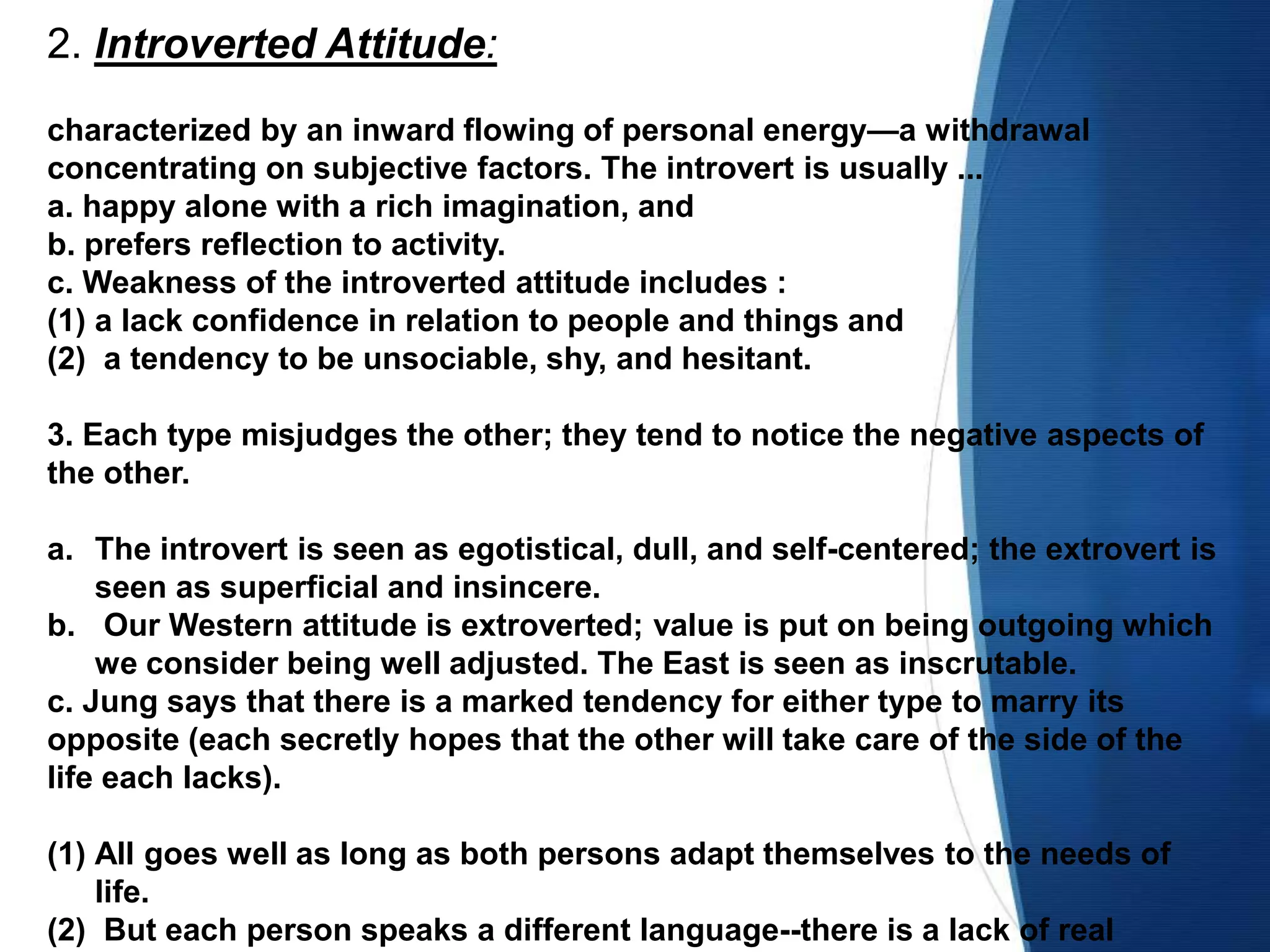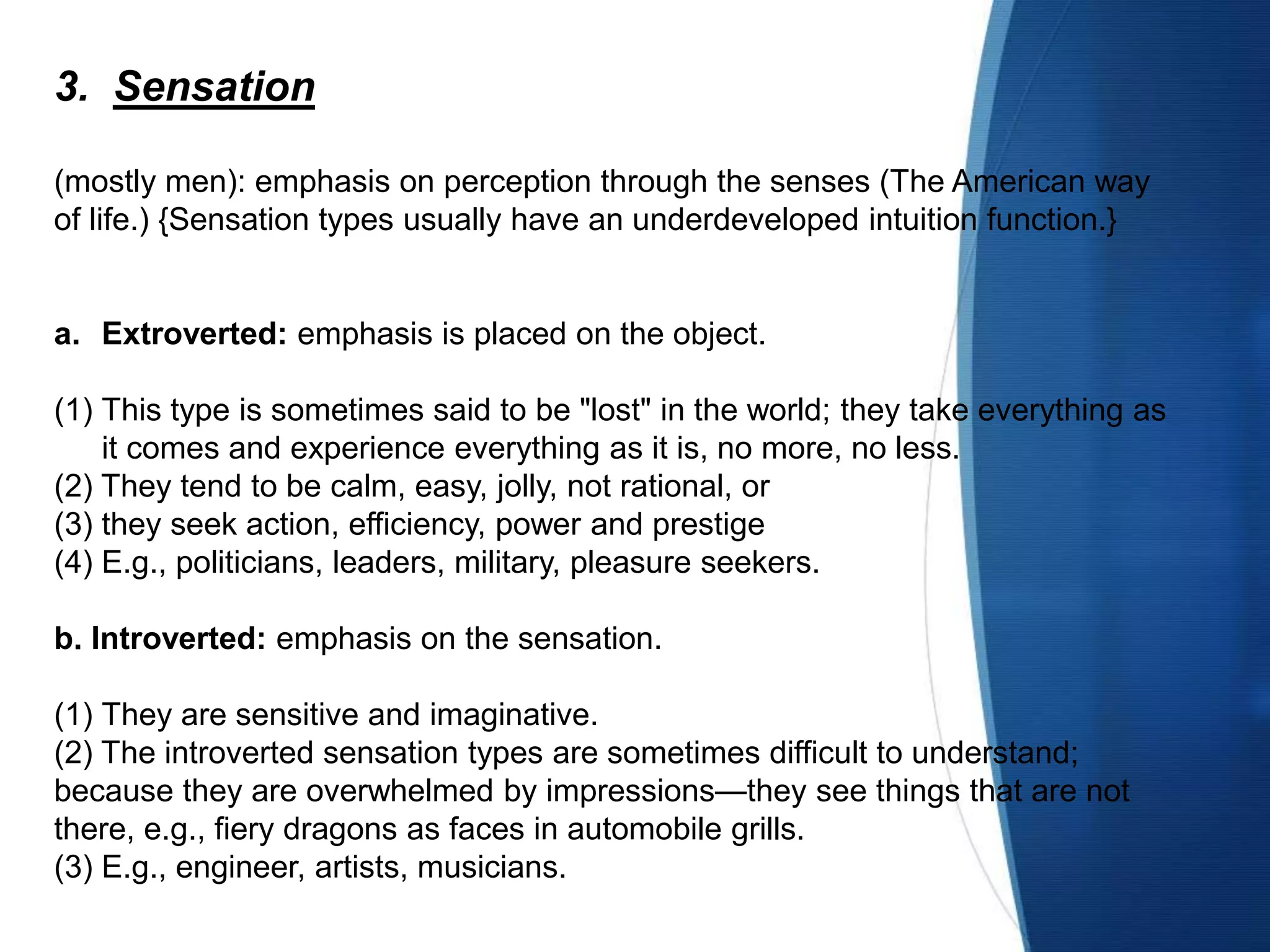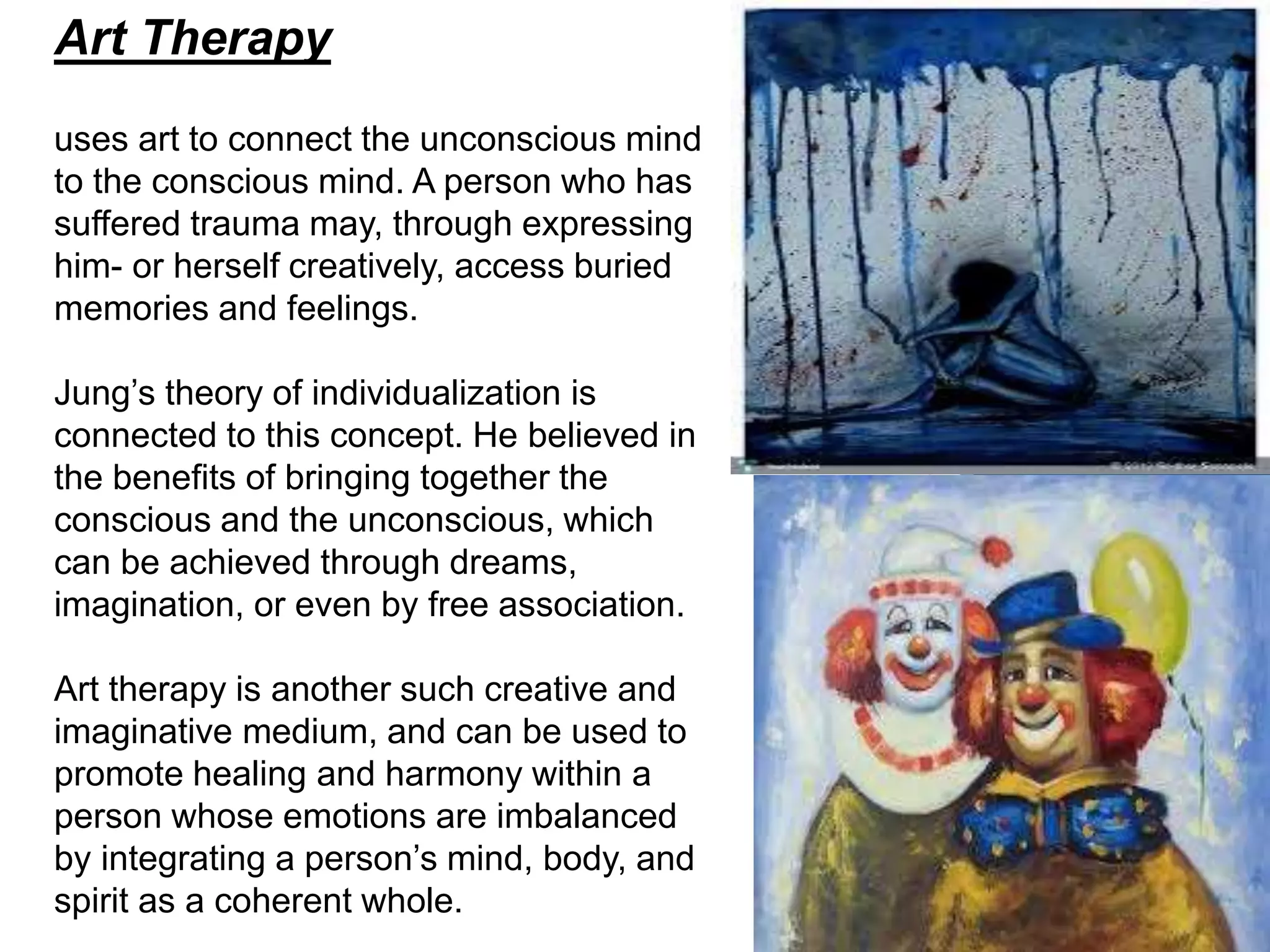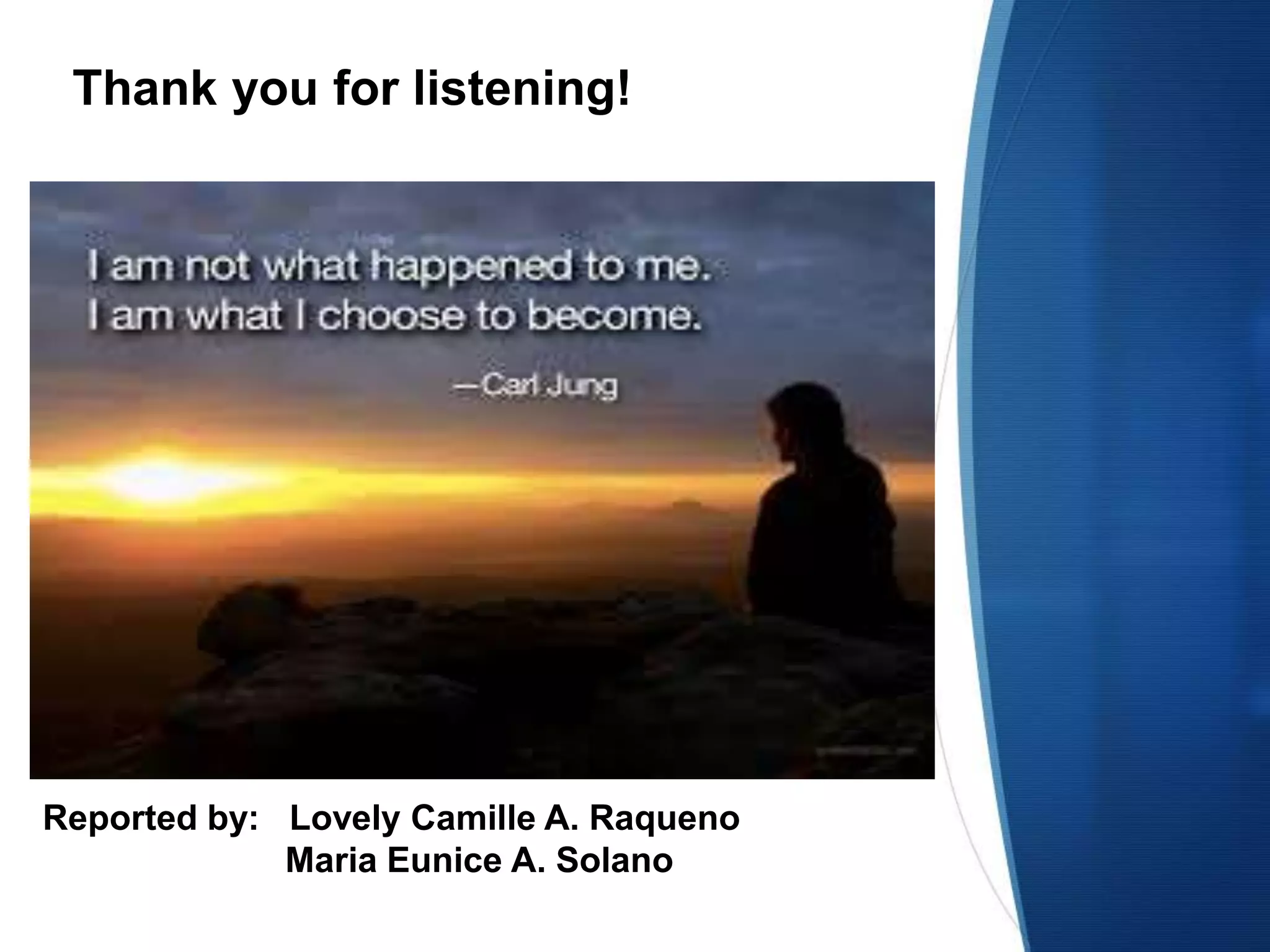Carl Jung was a Swiss psychiatrist and psychoanalyst who founded analytical psychology. Some of his key contributions include the concepts of archetypes, the collective unconscious, complex, and synchronicity. Jung proposed that archetypes are innate universal prototypes for ideas and may be found in myths, religion, and dreams. The collective unconscious consists of structures common to mankind, structured around archetypes. Jung identified 12 primary archetypes representing basic human motivations and personality traits. He also studied the anima/animus archetypes and the self archetype. Jung's work significantly influenced fields such as psychology, philosophy, and religion.



